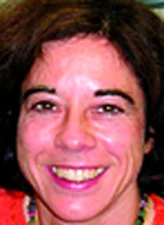Pascale Braconnot

The 2009 Milutin Milanković Medal is awarded to Pascale Braconnot for her original work on understanding the relative roles of obliquity and precession during the last interglacial period and, in particular, for her major involvement in the Paleoclimate Modeling Intercomparison Project for the Mid-Holocene.
After a PhD in oceanography in which she developed statistical methods to compare tropical ocean models to observations, Pascale Braconnot moved to the field of paleoclimate modelling and joined the Paleoclimate Modelling group at Laboratoire de Modélisation du Climat et de l’Environnement (now Laboratoire des Sciences du Climat et de l’Environnement).
One of her first interests has been to understand the mechanisms of the Asian and African monsoon amplifications during the Mid-Holocene. She actively participated in the development of the fully coupled ocean-atmosphere-vegetation model at Institut Pierre-Simon Laplace (IPSL) and was rewarded by becoming one of the first to show the importance of the synergisms between the atmosphere, ocean and vegetation in the response of the African monsoon to mid-Holocene insolation. Since her PhD, Pascale Braconnot gives prime importance to observations and climate reconstructions, and this is also true for her work on the Holocene climate. Since its start, she has been deeply involved in the organisation of the Paleoclimate Modelling Intercomparison Project (PMIP), in which climate model output are analysed and compared between each other and to reconstructions. She is now coordinating this project’s activities on coupled ocean-atmosphere simulations for the mid-Holocene and has performed some of the first modelling studies, using general circulation models, of the sensitivity of interannual variability modes, such as El-Niño Southern Oscillation, to the mid-Holocene insolation changes.
Pascale Braconnot has then broadened her research foci from the mid-Holocene to studying the response of the climate system to insolation forcing for other periods, in particular from early to late Holocene and during the last interglacial period. She was one of the team who first showed, with a three dimensional fully coupled ocean-atmosphere model, the importance of ocean feedbacks in the last glacial inception. Her later work on this topic focused on understanding the relative roles of changes in obliquity and precession during the last interglacial period.
Pascale Braconnot has supervised many students, two of which worked on the thermohaline circulation and its sensitivity to surface processes such as sea-ice and river run-off. This led her to study the sensitivity of future climate change to a possible melting of the Greenland ice-sheet, a sensitivity that she is also studying in past climates.
Hence, Pascale Braconnot not only served the French climate modelling community by developing and then supervising the development of the IPSL coupled General Circulation Model, but also developed a deep understanding of the feedbacks at work within the climate system in its response to insolation changes. She has emphasized analysing climate changes not only in terms of differences in mean climate, but also in its interannual and interdecadal variability. By actively participating in the organisation of PMIP, she has fostered the relationships between the modelling and paleodata community. This led her to act as lead author of the chapter “Understanding and Attributing Climate Change”, in the last IPCC report.
Pascale Braconnot has taken part and led many projects at the national and European levels, most notably MOTIF (Models and Observations to Test clImate Feedbacks) and ENSEMBLES (“ENSEMBLE-based predictions of climate changes and their impact”), in addition to being one of the leaders of the PMIP project. She has presided the evaluation committee in the French National Research Agency on Climate, Environment and Vulnerability for the last two years. She remains extremely active in the development of the IPSL model and in teaching and supervising new generations of students and researchers.
